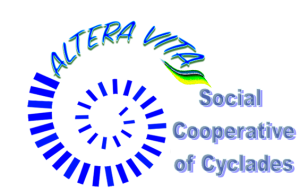MODULE 7 : Choreography and inclusion
Introduction
In educational projects in which dance is used as an inclusion tool, we can consider choreography as a somewhat more advanced or second level tool.
Thus, initially, the students build skills and aptitudes in pairs or small groups under the watchful eye of the teacher.
However, choreography can be used as an element to reinforce the autonomy of the students. As well as, at the same time, certain fundamental skills, such as creativity or leadership.
In this sense, in projects with a longer duration, making it easier for students to design their choreographies as the final project or course work is a high value-added tool for their personal development.
Choreography and leadership
In educational projects in which inclusion is a fundamental element, promoting student autonomy becomes one of the priorities.
In this sense, it is essential to promote the personal leadership of the students. But frequently the concept of personal leadership is confused with the leadership of groups or business activities in general.
But what exactly is personal leadership?
Personal leadership could be defined as the ability to lead oneself and lead one's life according to one's liking.
In other words, it is an ability to develop one's own lifestyle.
Perhaps it is strange for you to hear the concept of personal leadership since we are used to a leader guiding a group or a team of people, but the truth is that within us there are many elements which we must know how to lead in order to take control. of our lives. In this sense, in a generic way, we can say that the difference between people who achieve their objectives and those who remain stagnant is their personal leadership.
To have personal leadership we must learn to promote the way of thinking
- the way to act
- self-knowledge
- self-esteem
- empathy
- personal security
- ability to make decisions
- the way of relating
Ultimately, personal leadership consists of a set of skills that can be learned and practised.
In this sense, the possibility for students to design and carry out their own choreographies within a course to promote inclusion is extremely important, as a tool for the development of personal leadership.
Taking responsibility for a task is an essential way to get to know each other, boost self-esteem in students who often have low self-esteem, as well as boost personal relationships.
Finally, it should be noted that the fact that students design and carry out their own choreographies is an important tool for developing that other skill which is group leadership. And it is that in that it is a fundamental part of the choreography, leading a part of the students to carry it out.
In short, encouraging students in inclusive projects to design and perform a final-year choreography before a small audience is a second-level tool that should be part of the recommended activities.
Choreography and creativity
Frequently, in educational inclusion programs, creativity is not one of the elements that receive the most attention. However, it seems evident that in inclusion projects in which dance is used, this is an opportunity.
Encouraging the creativity of students in inclusion is always a good idea.
What do we understand by creativity?
Creativity, also called original thinking, creative thinking, inventiveness, constructive imagination or divergent thinking, is the ability to create, innovate, and generate new ideas or concepts, or new associations between known ideas and concepts, which usually lead to new conclusions. They solve problems and produce original and valuable solutions. Creativity is the production of an idea or a concept, a creation or a discovery that is new, original, useful, and that satisfies both its creator and others for some period of time.
Creativity can be understood as original thinking. That is, it is a mental process that is born from the imagination and encompasses several intertwined mental processes.
The quality of creativity can be assessed by the final result and this is a process that develops over time and is characterized by originality, adaptability and its possibilities of concrete realization. Consequently, the realization of choreography as a final work meets all these characteristics.
It is clear that there are creative individuals and others who are not so much, but we all have a creative capacity that must be stimulated.
It is in this precise sense that creativity must be introduced into educational projects for inclusion. In the case at hand, choreography is a first-class educational tool in this specific sense.
Therefore, creativity must be developed and improved. Obviously, artistic activities are especially suitable for this. Like the dance.
The simplest thing is to be clear about what creativity is for, that is, the advantages of creative learning.
These are some of the most prominent:
Efficiency when solving problems.
Greater capacity for innovation.
Better adaptability.
It positively influences self-esteem
Helps express emotions
There are many techniques to develop and increase creative ability, for example (group brainstorming), lateral thinking, mind mapping, idea selection, idea quantification, idea classification, concept mapping, etc.
The interesting thing is that all these tools can be learned using the choreography to be developed by the students.
Learning has long since ceased to be a mere process of memorization to become a sequence of empowerment of the most peculiar abilities of the student. In this sense, many differential pedagogical methodologies have appeared. And the use of dance to promote creative learning is one of them.
It is not strange, therefore, that a specific discipline called creative dance has even emerged.
In conclusion, it is worth noting the enormous contribution to the integral learning of the students that is obtained through the design and realization of their own choreographies.
